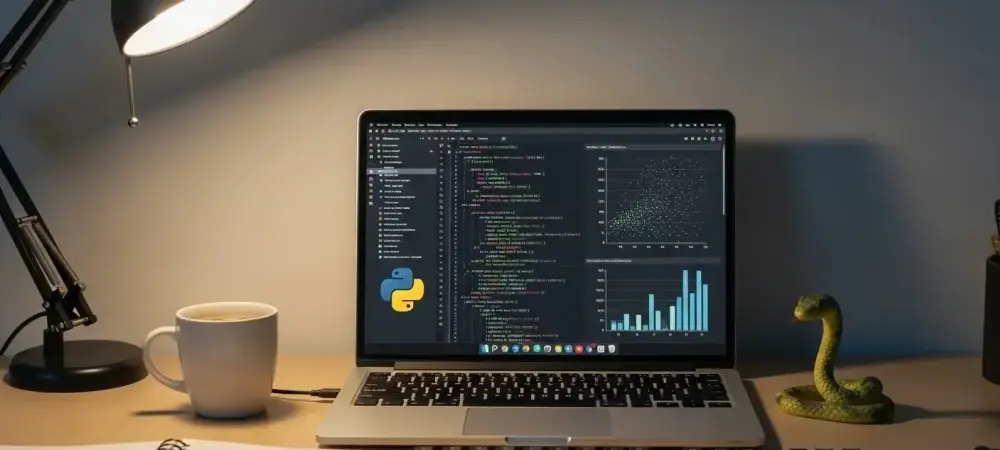What if a single tool could transform raw numbers into world-changing insights with just a few lines of code? In today’s data-driven landscape, Python has become that tool, powering everything from small business analytics to groundbreaking AI innovations at tech giants. This programming language, celebrated for its simplicity and strength, stands at the heart of data science—a field that shapes decisions in healthcare, finance, and beyond. Let’s dive into why Python reigns supreme and how it continues to redefine the way data is harnessed for impact.
The Core of a Data Revolution
Data science has emerged as a cornerstone of modern strategy, with companies racing to extract value from ever-growing datasets. The importance of choosing the right programming language cannot be overstated; it determines the speed, accuracy, and scalability of analytical efforts. Python has risen to prominence not by chance, but by meeting the precise needs of this fast-evolving domain, offering a gateway for both novices and experts to unlock data’s potential.
This dominance is reflected in staggering statistics: a recent survey by Stack Overflow revealed that over 60% of data professionals use Python as their primary tool. Its role extends beyond mere coding—it’s a catalyst for innovation, enabling teams to solve complex problems with unprecedented efficiency. Understanding Python’s place in this ecosystem sheds light on a broader shift toward data-centric decision-making across industries.
Unpacking Python’s Unrivaled Strengths
At the foundation of Python’s appeal lies its intuitive syntax, which strips away the complexity often associated with programming. Data scientists can craft solutions without getting bogged down by cumbersome code, allowing for rapid prototyping and testing of ideas. This accessibility accelerates workflows, turning concepts into actionable results in record time.
Beyond ease of use, Python boasts an extensive library ecosystem that tackles every stage of data analysis. Tools like Pandas streamline data manipulation, while Matplotlib crafts clear visualizations to reveal hidden trends. For cutting-edge pursuits, frameworks such as TensorFlow and Scikit-learn empower machine learning projects, making Python a one-stop shop for advanced analytics.
Scalability further cements its position, as Python integrates effortlessly with big data platforms like Spark and Hadoop. Handling massive datasets—a non-negotiable in today’s environment—becomes seamless, ensuring relevance even as data volumes soar. Add to this the ability to automate repetitive tasks, and Python emerges as a powerhouse that maximizes productivity at every turn.
Voices from the Trenches
Experts across the field consistently champion Python’s transformative impact. Dr. Emily Carter, a renowned data researcher, remarks, “Python’s versatility means moving from data cleaning to neural network design without switching environments—it’s unparalleled.” Her sentiment captures a widely held view among professionals who value the language’s cohesive capabilities.
Real-world stories add depth to these endorsements. A data analyst at a growing retail firm shared how using Python’s Pandas library slashed their reporting timeline from weeks to mere days, directly boosting operational decisions. Meanwhile, a Kaggle study notes that 85% of top competitors in data science challenges rely on Python, citing its robust community and library support as key to their success. These perspectives highlight a tool not just favored, but deeply trusted.
Python in Action: Real-World Impact
Consider the case of a healthcare startup leveraging Python to analyze patient data for better treatment outcomes. By employing libraries like NumPy for statistical analysis and Seaborn for visual dashboards, the team identified critical patterns in disease progression, ultimately informing life-saving interventions. This example underscores how Python turns abstract data into tangible results.
In the financial sector, firms depend on Python to predict market trends with machine learning models built on Scikit-learn. Such applications enable precise investment strategies, demonstrating the language’s reach beyond academia into high-stakes environments. The adaptability to diverse challenges—from small-scale insights to global predictions—reveals why industries lean on Python as a trusted ally.
The language’s role in automation also shines in corporate settings, where scripting mundane tasks frees analysts to focus on strategic thinking. A multinational corporation reported a 40% efficiency gain in data processing after integrating Python scripts into their workflow. This practical edge illustrates how the tool reshapes not just outcomes, but entire operational mindsets.
Charting the Path with Python
For those eager to tap into Python’s potential, a structured approach yields the best results. Begin by mastering core concepts like data structures and syntax through accessible platforms like Coursera, which offer tailored courses for data science newcomers. A strong foundation paves the way for deeper exploration.
Next, prioritize hands-on experience with essential libraries—Pandas for data wrangling, Matplotlib for visualization, and Scikit-learn for introductory machine learning. Engaging with public datasets on platforms like Kaggle provides practical exposure, sharpening skills through real challenges. Progressing to advanced tools like PyTorch for deep learning opens doors to innovative projects such as image recognition.
Finally, connecting with the vibrant Python community via forums like Stack Overflow fosters growth and problem-solving. Sharing code and staying updated on library enhancements ensures relevance in a dynamic field. These steps, rooted in Python’s strengths, equip aspiring data scientists to navigate complex problems with confidence.
Reflecting on a Data-Driven Legacy
Looking back, Python carved a path that reshaped how industries approached data, turning chaotic information into structured wisdom with unmatched ease. Its libraries became lifelines for analysts, while its scalability adapted to the relentless growth of data demands. Each milestone, from automating workflows to powering AI breakthroughs, marked a step toward smarter, faster solutions.
The journey underscored a truth: mastering Python was not just about learning a language, but about unlocking a mindset of innovation. As new challenges emerged, the community’s resilience and collaborative spirit stood out, ensuring the tool evolved alongside needs. This legacy of adaptability became a blueprint for tackling complexity with clarity.
Moving forward, the focus shifts to harnessing Python for emerging frontiers like advanced AI and real-time analytics. Exploring integrations with next-gen platforms and contributing to open-source advancements offer pathways to stay ahead. Embracing these opportunities ensures that the impact of Python, already profound, continues to expand in solving tomorrow’s puzzles.

